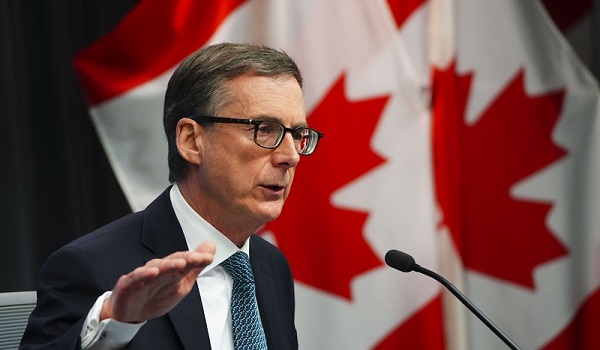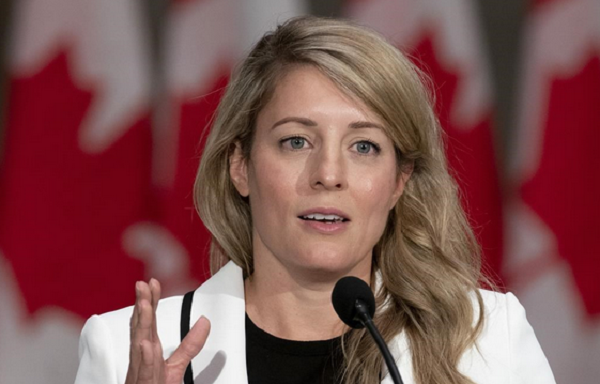Bank of Canada cautious of rate cuts, to avoid faulty inflation forecasts
The Bank of Canada is making progress in its battle against inflation, but Governor Tiff Macklem still has a big reason to be cautious about launching into rate cuts too soon — his credibility’s on the line.
The central bank, after enduring one of its toughest trials of the last 50 years, is edging closer to getting inflation back to its two per cent target. Economists are forecasting it will get close by the end this year, without a recession.
That would be a major win for the institution — which, like the U.S. Federal Reserve and other central banks, has been scrutinized and criticized for the surge in consumer prices that began in 2021.
Lowering rates prematurely, only to see inflation take off again, would be a brutal outcome for a central bank that’s been dragged through the mud by politicians on the left and right. That’s an incentive for Macklem to hold the policy rate at the current level at least until June.
“They need to be completely sure that they’re in a position to cut rates before they cut,” Andrew Kelvin, head of Canadian and global rates strategy at Toronto-Dominion Bank’s securities division, said in an interview. “The longer we run inflation around three per cent, the greater the risk is that people just accept three per cent is what inflation’s going to be going forward.”
For the bank’s six-person governing council to ease rates, they’ll need faith in their inflation forecasts, which show a return to two per cent next year. That’s difficult when some of the bank’s earlier projections turned out to be so off the mark.
“I don’t think the bank is or should be that confident in its ability to forecast a return to two per cent inflation,” Stephen Gordon, an economics professor at Université Laval, said in an interview. “Do they have to wait to hit two per cent before cutting? No, they don’t. But they would need to have confidence in that forecast.”
Macklem became governor in June 2020 as the global economy was still reeling from the initial shock of Covid-19. One of his first acts was to provide an explicit pledge: “If you’ve got a mortgage or if you’re considering making a major purchase, or you’re a business and you’re considering making an investment, you can be confident rates will be low for a long time,” he said in July of that year.
The message helped ignite Canada’s housing market as the economy snapped back. Benchmark home prices rose over 50 per cent in a little more than a year and a half, adding fuel to inflation.
“A long time” turned out to be about 20 months, as the Bank of Canada began a series of rate hikes in March 2022 that took the overnight rate from 0.25 per cent to five per cent.
Most analysts give Macklem credit for his swift pivot, but it’s still a sore spot for Canadians who took out adjustable-rate mortgages on Macklem’s guidance and are now stuck with much higher payments. Yet bailing out that group with deep rate cuts now carries its own risks.
The rate of inflation eased to 2.8 per cent in February, but that was just the third time in 35 months that inflation was within the bank’s inflation control band of one to three per cent. In December, 56 per cent of economists polled by Bloomberg said the delayed return to the inflation target was hurting the bank’s credibility.
The central bank has communicated that it would rather err on the side of over-tightening policy. Canada’s economy isn’t performing as well as the U.S., but it’s not weak enough to force rate cuts yet. Recession calls have disappeared, incomes are rising, and there are few signs of significant debt defaults among households.
“To ease too soon would be the final straw,” Derek Holt, an economist with Bank of Nova Scotia, wrote in a note to investors. He expects the Bank of Canada will start cutting rates in September, later than the median estimate of economists.
“It would be a high-stakes gamble that could easily backfire and add another black mark against Macklem’s leadership in the role,” he wrote.
The dynamics in the real estate market are a factor: there’s already mounting demand for homes and a shortage of supply. In January 2023, when Macklem explicitly declared a conditional pause in rate hikes, it helped stoke a five-month rally in home prices.
There are also political risks to cutting prematurely. Some politicians, including Ontario’s premier, have called for rate cuts. And Conservative Leader Pierre Poilievre, who’s the favorite to win the next election, once pledged he’d fire Macklem for letting inflation get out of control. He hasn’t repeated the threat lately.
Traders in overnight swaps put the odds of the first rate cut at about a coin flip at the bank’s June meeting. Economists surveyed by Bloomberg see officials starting to ease that month, then gradually loosening monetary policy, bringing the benchmark overnight rate to 3.5 per cent by April of 2025.
This article was first reported by BNN Bloomberg












